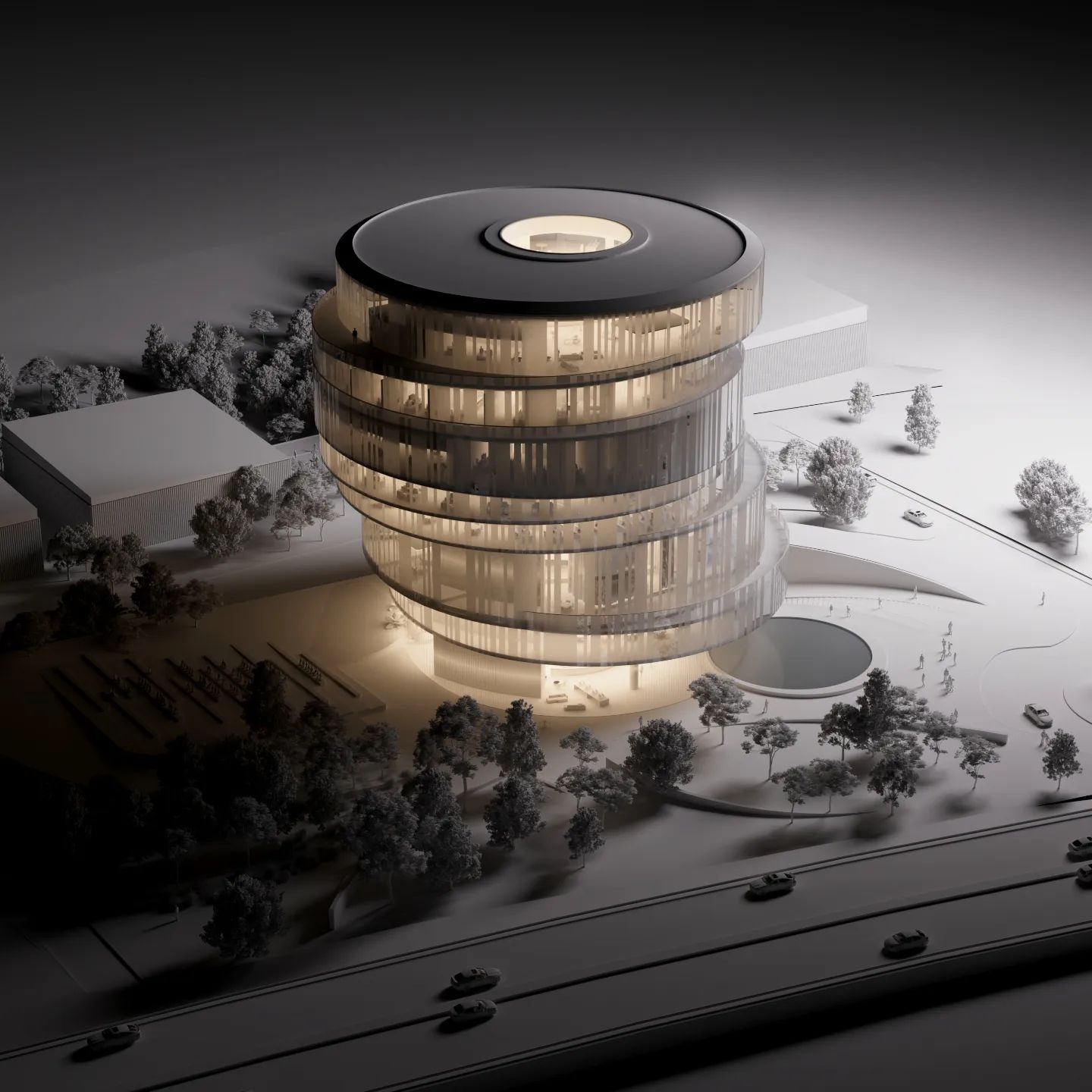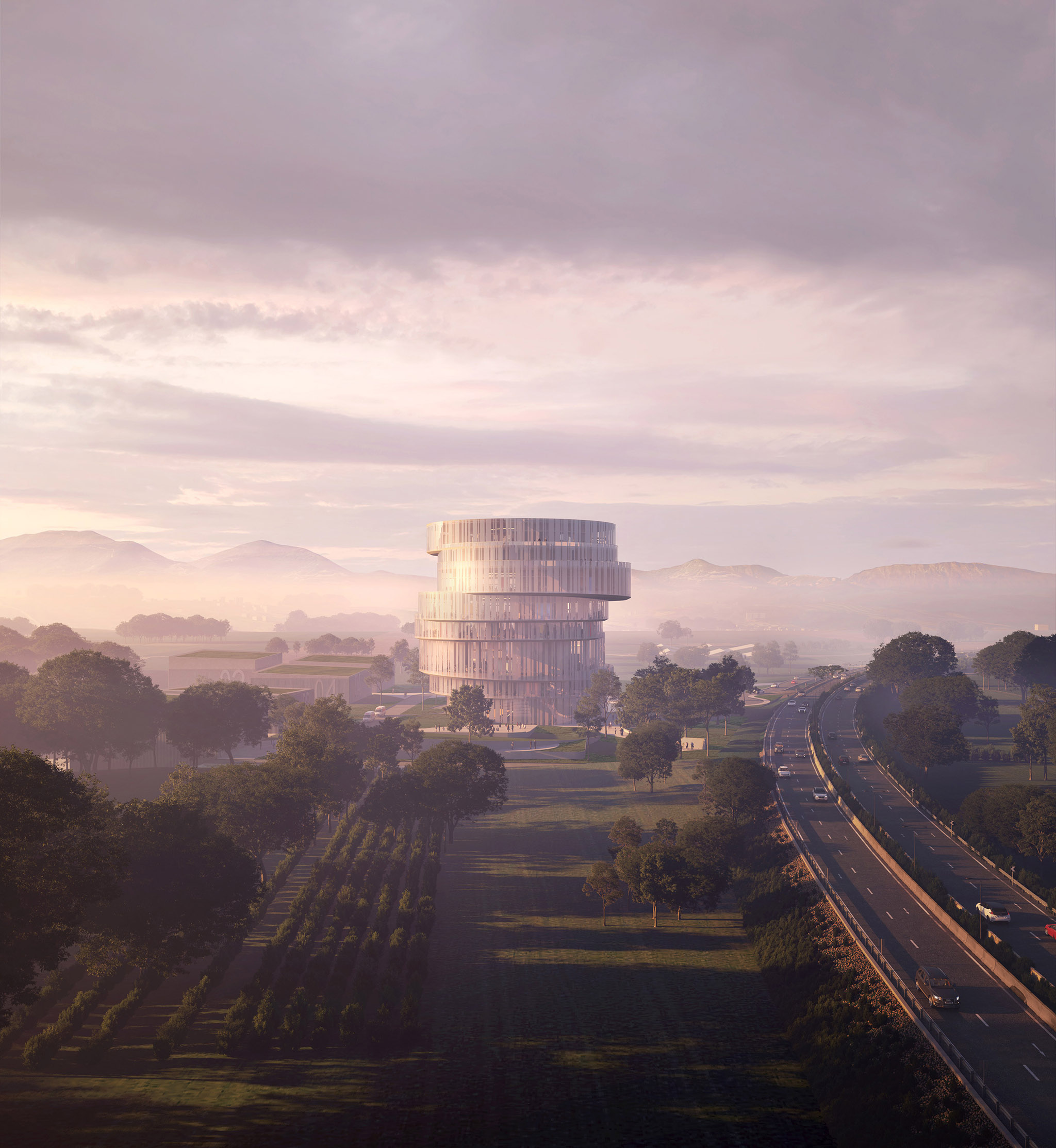The volume is organized over eight floors with five programmatic areas. Inside, natural light crosses all floors to find the atrium in a marble "cave". The void connects all circulation areas in order to promote social relationships, exchange of ideas and strategic leisure points. Conceived with ambitious sustainable objectives, the project uses solar energy and reuses rainwater.
The surface is profiled glass structure that allows obtaining transparency as well as opacity that produces varied lighting and atmosphere. The chosen construction system, a 'bubbling slab' technique, allows for the reduction in the number of pillars and increases the span of the slab so that a more flexible workspace can be enjoyed.

Model. Klan TV Headquarters in Tirana by OODA.

Klan TV Headquarters in Tirana by OODA. Rendering by Plomp.
Project description by OODA
Our proposal for the Klan TV headquarters in Tirana was selected as the winning project in the international competition to develop the new headquarters of the iconic Albanian television station.
Located in an area that is currently witnessing exponential growth, the proposal was inspired by a set of film reels and the characteristics of local art and architecture. The project, which aims to meet Klan TV's expectations of becoming an icon in Tirana, presents different shapes whose perception varies according to the way one circulates around them, offering panoramic views from the mountains to the city. The floors slide freely into one another, creating a dynamic façade and balconies that can be enjoyed by building users. In this way, each floor takes on a different relationship with the landscape and the atrium.
The volume is organized over eight floors with five programmatic areas. Inside, natural light crosses all floors to find the atrium in a marble ‘cave’.
The void connects all circulation areas in order to promote social relationships, exchange of ideas and strategic leisure points. Conceived with ambitious sustainable objectives, the project uses solar energy and reuses rainwater. The surface is profiled glass structure that allows obtaining transparency as well as opacity that produces varied lighting and atmosphere. The chosen construction system, a 'bubbling slab' technique, allows for the reduction in the number of pillars and increases the span of the slab so that a more flexible workspace can be enjoyed.
The proposal integrates the volume into the site, making it part of the landscape and bringing quality to the site.













































